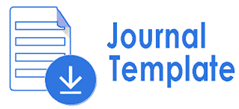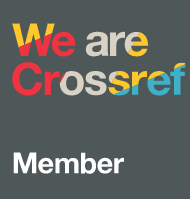Extended metaphor in Adrienne Rich's poem: Diving into the wreck
Abstract
Keywords
Full Text:
PDFReferences
Blanchard, C. (2019). Réception et traduction de la poésie d’Adrienne Rich en France [Phdthesis, Université Michel de Montaigne - Bordeaux III]. https://theses.hal.science/tel-02292749
Chahboun, S., Kvello, Ø., & Page, A. G. (2021). Extending the Field of Extended Language: A Literature Review on Figurative Language Processing in Neurodevelopmental Disorders. Frontiers in Communication, 6. https://doi.org/10.3389/fcomm.2021.661528
Cibulskienė, J. (2023). Scepticism voiced through extended metaphors: Assessment of higher education reform in the media. Metaphor and the Social World, 13(2), 197–220. https://doi.org/10.1075/msw.22022.cib
Faber, P., & Linares, C. (2004). The role of imagery in specialized communication (pp. 585–602).
Fahs, B. (2013). Diving (Back) into the Wreck: Finding, Transforming, and Reimagining Women’s Studies and Sexuality Studies in the Academy. Feminist Studies, 39(2), 496–501.
Gibbs, R. W., & Rasse, C. (2022). Metaphor in understanding literary characters. In Researching Metaphors. Routledge.
Hassan, M. F., Talif, R. bin, & Kaur, H. (2020). Resurfacing Female Identity via Language in Adrienne Rich’s Diving into the Wreck | Mediterranean Journal of Social Sciences. https://www.richtmann.org/journal/index.php/mjss/article/view/8091
Hussein, Hi. A., & Hamad, S. S. (2023). Self-Reflexivity in Selected Poems by Adrienne Rich: الانعكاسية الذاتية في قصائد مختارة للشاعرة أدريان ريتش. Journal of Education College Wasit University, 51(2), 393–408. https://doi.org/10.31185/eduj.Vol51.Iss2.2167
Jaber, W. M., & Ali, A. A. (2023). Challenging Patriarchy: Feminist Reading in Select Poems of Adrienne Rich. Journal of Asian Multicultural Research for Educational Study, 4(2), Article 2. https://doi.org/10.47616/jamres.v4i2.428
Kövecses, Z. (2020a). An extended view of conceptual metaphor theory. Review of Cognitive Linguistics. Published under the Auspices of the Spanish Cognitive Linguistics Association, 18(1), 112–130. https://doi.org/10.1075/rcl.00053.kov
Kövecses, Z. (2020b). Extended Conceptual Metaphor Theory. Cambridge University Press. https://doi.org/10.1017/9781108859127
Lavery, C. (2020). Diving into the Slave Wreck: The São José Paquete d’Africa and Yvette Christiansë’s Imprendehora. Eastern African Literary and Cultural Studies, 6(4), 269–283. https://doi.org/10.1080/23277408.2020.1799706
Mąkowska, J. (2023). “For the Relief of the Body and the Reconstruction of the Mind”: Adrienne Rich’s Metamorphoses. Polish Journal for American Studies, 9 (2015), 97–111. https://doi.org/10.7311/PJAS.9/2015/6
Muskat-Tabakowska, E. (2021). Zoltàn Kövecses, Extended Conceptual Metaphor Theory. Cambridge: Cambridge University Press, 2020. Półrocznik Językoznawczy Tertium, 6(1), Article 1. https://doi.org/10.7592/Tertium.2021.6.1.189
Numano, K. (2002). Extended Metaphor: The Poetics of Tat’iana Tolstaia. The Soviet and Post-Soviet Review, 28(1–2), 131–137. https://doi.org/10.1163/18763324-028-01-12
Okonski, L. (2015). Diving into the Wreck: Embodied Experience in the Interpretation of Allegory [UC Santa Cruz]. https://escholarship.org/uc/item/6nj4j1cb
Quigley, K. (2022). Reading Underwater Wreckage: An Encrusting Ocean. Bloomsbury Academic. https://acuresearchbank.acu.edu.au/item/90207/reading-underwater-wreckage-an-encrusting-ocean
Rich, A. (1973). Diving into the wreck; poems, 1971-1972. New York, Norton. http://archive.org/details/divingintowreck00adri
Thibodeau, P. H. (2016). Extended Metaphors are the Home Runs of Persuasion: Don’t Fumble the Phrase. Metaphor and Symbol, 31(2), 53–72. https://doi.org/10.1080/10926488.2016.1150756
Yom, S. S. (2022). Diving into the Wreck: To Search for the Thing Itself. Practical Radiation Oncology, 12(5), e365–e367. https://doi.org/10.1016/j.prro.2022.05.013
DOI: https://doi.org/10.33373/chypend.v10i2.6177
Refbacks
- There are currently no refbacks.

This work is licensed under a Creative Commons Attribution-NonCommercial-ShareAlike 4.0 International License.
Copyright (c) 2018 Universitas Riau Kepulauan

Ciptaan disebarluaskan di bawah Lisensi Creative Commons Atribusi 4.0 Internasional.















